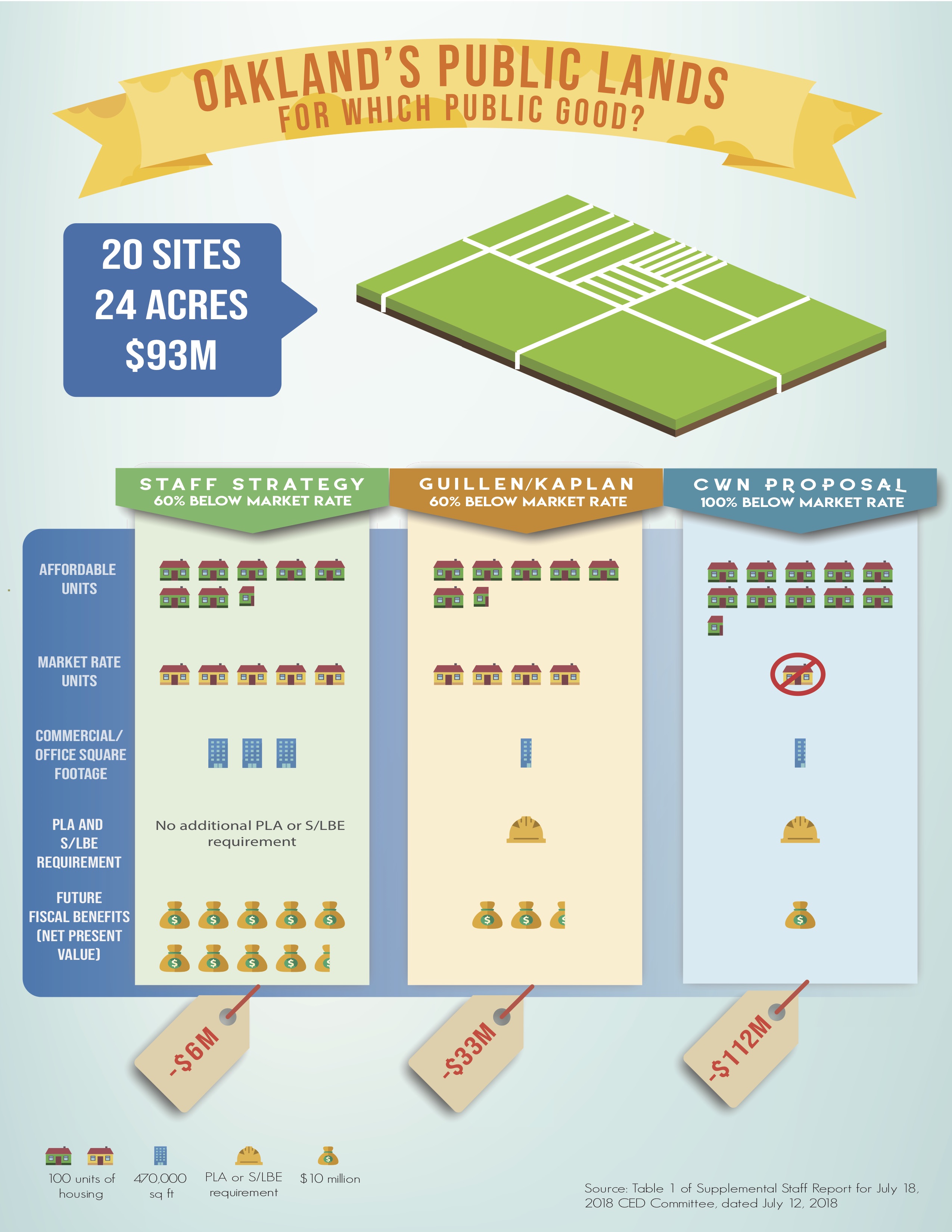By Julia Foote
Oakland is going through major changes — economically, physically, and demographically. Like many cities in the Bay Area, it is experiencing a surge of investment. The result is new businesses, infrastructure upgrades, urban amenities, and a wave of well-paid newcomers coupled with a loss of cultural institutions, mom-and-pop shops, affordable housing, and longtime residents who can no longer afford to live there.
Unfortunately, investment in Oakland’s neighborhoods is not benefiting those who have historically needed investment most — notably communities of color and low-income populations. Rising property values and rents have led to the displacement of residents who have suffered years of disinvestment, and will be unable to reap the benefits of new development and amenities in their neighborhoods.
The high costs of land and construction compound the challenges of preserving and producing an adequate supply of affordable housing and protecting vulnerable residents from displacement. But Oakland has a key resource it hasn't yet leveraged: the many parcels of publicly owned land scattered throughout the city. Oakland’s public land can be a vital resource to increase the supply of affordable housing. This idea follows the principle that public land should be prioritized for the public good.
For the city to take advantage of this opportunity, it needs to establish a comprehensive public lands policy that ensures that these assets maximize public benefits and that the City has clear and predictable parameters for their use. Oakland’s existing public lands strategy doesn’t establish specific goals and targets for using public land to foster public benefits to the maximum extent feasible.
The City conducted an initial review of the land it owns and found that there are only 20 parcels deemed suitable for multi-family residential development that could be successful in securing funding for affordable housing. Criteria for choosing suitable sites for housing development boils down to parcels that are clean of environmental contamination, free of environmental or historic preservation restrictions, large enough to accommodate multi-family housing, and located near transit and mixed-use corridors. These limitations make it absolutely critical for the City to find the best use for these limited sites to maximize public benefits.
Steps have been taken in recent years to update Oakland’s public lands policy, beginning in the spring of 2016 with an ongoing discussion between the city and various stakeholders. The Oakland Citywide Anti-Displacement Network (CWN) — a coalition of community organizations that focus on housing, environmental justice, and social equity — played a major role in developing and implementing a community-driven process advocating for a public lands policy that addresses the severity of the housing crisis by maximizing affordable housing on city-owned land.
An important point of discussion has been about which strategy would maximize community benefits. While some stakeholders argue that all or most parcels suitable for residential use should be developed as 100% affordable housing, others believe that benefits will be maximized if some parcels are developed as a mix of market rate and affordable so the market rate units can subsidize affordable housing on other sites with the result of creating more affordable units overall.
On June 26th, Oakland's Community and Economic Development (CED) Committee heard a report on three proposed policy alternatives for developing public lands: one from staff, one from Councilmembers Abel Guillén and Rebecca Kaplan, and one from the CWN (see graphic). While all three proposals call for prioritizing affordable housing, the strategies for developing it in conjunction with market-rate units and commercial development vary. All three proposals have been forwarded for discussion at the October 16th City Council meeting.
City-owned land has the potential to provide much-needed affordable housing, residential density near transit, and a strategy for neighborhood stabilization and displacement prevention. These goals fall in line with the Sierra Club's vision for sustainable and equitable communities that make the best and most efficient use of infill space, infrastructure, and transit.
We encourage you to show up to the October 16th City Council meeting and voice your stake in Oakland forming a policy that priorities public land for public good.
